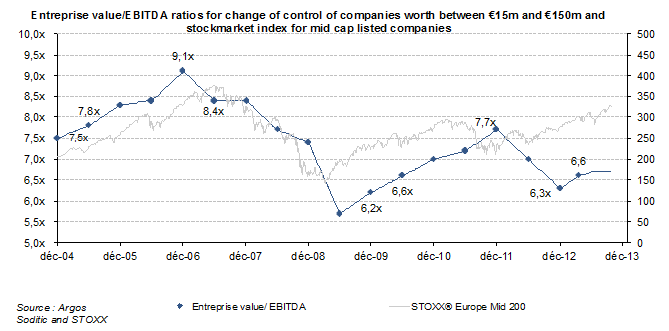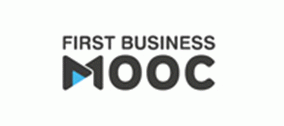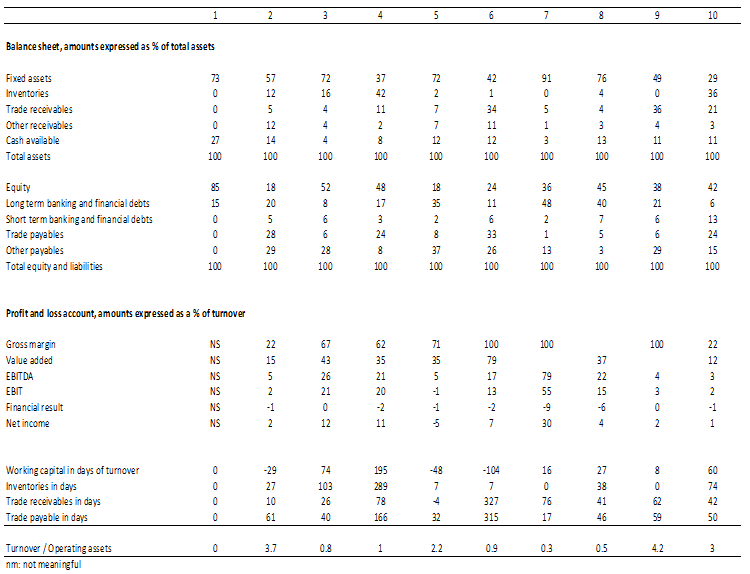Letter number 80 of Januray 2014
- TOPIC
- STATISTICS
- RESEARCH
- QUESTIONS & COMMENTS
News : Some thoughts on valuation practices
Professors Franck Bancel and Usha Mittoo conducted a survey of around 400 European business valuation specialists, across a very broad spectrum (investment bankers, portfolio managers, wealth managers, financial analysts, CFOs, valuation experts) concerning their business valuation practices. [1]
Among the methods used by practitioners, there is a very clear predominance of the discounted free cash flows method and comparables methods[2]. Discounting dividends, which was the main method used up until the mid-1990s, is in the process of disappearing, given its imperfections and the fact that spread sheets are now available everywhere which make it possible to discount free cash flows, which are normally more reliable. The discounted dividends method will probably not disappear completely, since its applications are still relevant in the financial sector.
Fifteen years following predictions of a great and glorious future[3], admittedly in a propitious context (the TMT bubble), the real options method has still not taken off. For us, it remains an interesting conceptual framework that can be used for modelling flexibility, but for which the practical applications are still a long way off[4].
It regrettable that 29% of those surveyed still use accounting values and not financial values, to calculate the weighted average cost of capital, which is a logical error since the required rates of return are market data and the concept of the cost of capital is not an accounting concept.[5] However, we are delighted that 71% of those surveyed do not make this error!
The vast majority of those surveyed use the government bond rate as the risk-free interest rate. Recent years have shown that government bonds are not necessarily free of the risk of interest rate fluctuations, given that for some of them, solvency has become relative. For our part, we prefer to use short term Treasury bills of a government rated AAA, which in the euro zone, means Germany.[6] If we do this, then in line with financial theory, we really do have a risk-free asset.
It is in terms of the methods for calculating the beta that practices differ the most, which is hardly surprising, since a business valuer is rarely a saint. More often than not, he or she has an aim in mind and the beta is a major adjustment factor. Historical or prospective, calculated against a narrow or a wide index, over a short or long period, on a daily, weekly or even monthly basis, calculated as an average or median of betas of comparable companies, with or without tax impact (for us, the rule is without[7]), with a beta on debt postulated as zero or calculated, etc., the possibilities are endless and have not been strictly codified.
Over one-third of valuers take into account an illiquidity or size premium for the smallest companies. It’s always easier to get the parties to accept this discount at the level of the discount rate than at the level of the final value. In one case it comes across as being scientific, and in the other it seems more like the figures are being rigged. But the result is the same and common sense is on its side.
How much ink has been spilt and how much more will be spilt over terminal value? 28% of valuers calculate it on the basis of a multiple, which to us, putting it plainly, is a heresy. We’re in the middle of an intrinsic method. Let’s stay there right up to the end and leave multiples to the comparative methods!
Only 18 % of valuers make use of the cash flow fade technique[8] which makes it possible to ensure that we do not discount to infinity, cash flows based on unrealistic assumptions of a company earning more than its cost of capital indefinitely. 18% is better than 15 years ago, when practically nobody was using this technique, but it is still woefully insufficient. Failing to think, at the end of the business plan period, about the company’s return on capital employed in relation to its cost of capital, is in our view, giving carte blanche to all forms of abuse.
Less progress needs to be made in terms of the value of the debt to be taken into account, which for 43% of valuers, is not its accounting value. This should correspond more or less to the proportion of cases where the issue is really raised – the company’s solvency has varied sharply since its debt was issued and / or the interest rates have varied substantially since then for fixed-rate debts.
We leave the last word to a respondent to the survey who reminds us that the discounted free cash flows method, with all of its details, gives the impression of accuracy, while this model can be extremely sensitive to assumptions retained, and so not at all accurate.
[1] You can consult the survey by clicking here
[2] For more on these methods see chapters 23 and 32 of the Vernimmen
[3] We remind you of a McKinsey conference in 1999 where it was announded that it would replace the DCF method within 10 years
[4] For more see chapter 31 of the Vernimmen
[5] For more see chapter 30 of the Vernimmen
[6] For more see the Vernimmen.com Newsletter n° 71, January 2013
[7] For more see chapter 30 of the Vernimmen
[8] For more see chapter 32 of the Vernimmen
Statistics : EV/EBITDA ratio for mid cap transactions and stock market indexes
Even if the market for acquiring control over a company and the one to buy a few shares in mid cap listed companies are different, they are nonetheless linked together as illustrated by this graph which demonstrates a pretty good correlation between them.
Research : The power of managers internally – a source of inefficiency?
With Simon Gueguen – Lecturer-researcher at the University of Paris Dauphine
The way in which large multinationals allocate their capital among the different operating entities that make them up, is referred to as “internal capital markets”. There are a lot of theories about the efficiency of these mechanisms, but a lack of data means that they cannot be confirmed or disproved. The article that we discuss this month[1] is thus particularly interesting. Glaser et al gained access to very detailed information concerning the internal capital markets of a multinational. In this case study they show that managers of operating entities use their influence in order to attempt to obtain a larger share of financing, and that this use of influence could be to the detriment of the company’s efficiency.
The way internal capital markets function has been studied from a theoretical point of view by some very big names in economic research. On the side of the optimists, we have, for example, Oliver Williamson (2009 Nobel Prize). In this type of model, the internal capital markets aggregate the cash flows generated by the different entities and the funds are reallocated to the entities on the basis of their investment opportunities. The allocation mechanism is efficient and creates value. On the side of the pessimists, we find, for example, Ronald Coase (1991 Nobel Prize), according to whom the power of internal managers is the determining factor in the allocation of funds. Internal capital markets will then destroy value, for two reasons:
-
the time spent by managers using their influence in order to obtain more financing represents a waste of time and money for the company;
-
funds are no longer allocated in accordance with a value creation criteria.
Although Glaser et al do not disclose the identity of the company studied, we know that it is made up of 20 entities, divided into five departments (representing sectors) which themselves fall under the authority of the head office. The departments do not have their own budgets and do not constitute an intermediary level. The choice of financing is made at the level of the operating entities. There is nothing unusual about the company's financial figures. Financial leverage is a bit low and the dividend payout ratio is slightly higher than the average Dow Jones company.
The study covers five years (2002 to 2006). For each year and for each operating entity, Glaser et al compare the forecast investments budget with the investments actually made. They show that initially, the forecast budget overestimates the investments made in 73% of cases. This phenomenon has already been observed in the past and is referred to as budgetary slack. The main idea of the article is to study what happens when, during the course of a year, there is a cash inflow that is not related an entity's performance. Typically, this results from the sale by the company of a substantial stake that is deemed to be non-strategic. The cash windfall obtained in this way is partly (9% of the total) reinvested through different operating entities. The amounts are high: the total makes up a 62% rise in the company’s investments. Glaser et al show that the increase in investments in the entities managed by influential managers is 74% higher than in the other entities[2].
The next question is whether this mechanism is efficient or inefficient. It would be conceivable that the manager’s power could be a means of reducing problems of information asymmetry in the allocation of capital. In this case, additional investments made would create value. Conversely, it is possible that this use of influence draws funds away from better investments. In the case studied, the result is clear – the process is inefficient. Glaser et al measured the ex post performance of the investments (as of 2006). They show that the operating entities that received additional financing thanks to the influence of their managers subsequently perform less well, whether in terms of profitability, economic value added[3] or productivity.
Of course, the results of this article cannot be generalised as they only concern a single company. They do show, however, that the internal use of influence can destroy value. The consequences from a managerial point of view are simple. It is not a bad idea to rotate the managers of the different entities on a regular basis, and it is necessary to draw up rules for allocating financing in the case of cash windfalls, that are based on the criteria of economic efficiency.
* * *
Take A Free Four-Week Online Course Taught By One Of Harvard's Best teacher
In an upcoming Massive Online Open Course (MOOC) taught by award-winning Harvard Business School professor Marc Bertoneche, First Finance offers you the chance to learn the ins and outs of financial analysis. This MOOC will help you become more confident in business essentials such as financial modeling and the process of business evaluation... Register today
[1] M.GLASER, F.LOPEZ-DE-SILANES et Z.SAUTNER (2013), Opening the black box: internal capital markets and managerial power, Journal of Finance, vol.68, n°4.
[2] The article is very comprehensive and Glasser et al use different indices for measuring managers’ influence (their time spent at the company, their personal connections with the company’s senior management, their social networks, etc.)
[3] For a description of this concept, see chapter 28 of the Vernimmen.
Q&A : Who is who?
Just to ensure that your neurons didn’t all fall asleep over the festive season, we tested you with a little detective work, worthy of the best financial analysts and also beginners. Who is who? invited you to find out which economic sectors are hiding behind the series of figures that follows.
We were looking for:
A general retailer,
A luxury group,
An advertising agency,
A cement maker,
A trader in steel products,
A temporary employment group,
A satellite operator,
An airline company,
A Cognac producer,
A holding company.
Solution:
What is a holding company if not a company that does not have its own operating activity and accordingly does not have any working capital? So it’s number 1.
What is a producer of Cognac if not a brand (which will only be included in intangible assets if it has been acquired, cellars and inventories, because it takes 7 years to make a Cognac. So it is number 4. Remember that since inventories are valued at their cost price and not their sale price, they represent 289 days of sales and would represent a lot more in days of cost price.
What is a satellite operator if not a company that rents a satellite in orbit to which waves are transmitted which are then retransmitted back to earth? In other words, a company with a very high level of fixed assets, few inventories, probably a very high EBITDA margin (operating costs are low). So it’s number 7.
What is an airline company if not a business where customers pay, generally in advance, with few inventories and a lot of fixed assets? So it’s number 5.
What is a luxury business if not an enterprise with a high EBIT (when things are going well), sales generally made to direct customers, so with low levels of trade receivables? It’s number 3. The large number of fixed assets is explained by the purchase of a large number of brands.
What is a general retailer if not a company with negative working capital - there is quick inventory turnover, customers pay cash or by credit card at the end of the month and margins are low? It’s number 2.
What is a trader in steel products if not a retailer like the general retailer above, but which has high levels of inventories with a much slower rate of turnover? It’s number 10.
What is an advertising agency is not, from a financial point of view, a company that collects funds from its customers, the advertisers, and which passes them on some time later to the media that broadcast the messages that it has designed? It even plays a role of settlement agency or bank – the Saatchi brothers at the height of their glory were seriously considering buying Midland Bank. So it’s number 6.
What is a temporary employment group if not a company without inventories, with no purchases (so with a gross margin of 100%) and low margins as it does not have much invested capital. So it’s number 9.
As for a cement group, it’s a company with a lot of fixed assets (can you remember the last time you saw a cement works?), so probably with a substantial amount of debt and low sales turnover compared with capital employed. A bag of cement isn’t worth much. You can get a 35kg bag of cement for less than €10 – for this price you wouldn’t even be able to buy 2 sq cm of a Louis Vuitton bag! So it’s number 8, which is also the last on our list.



